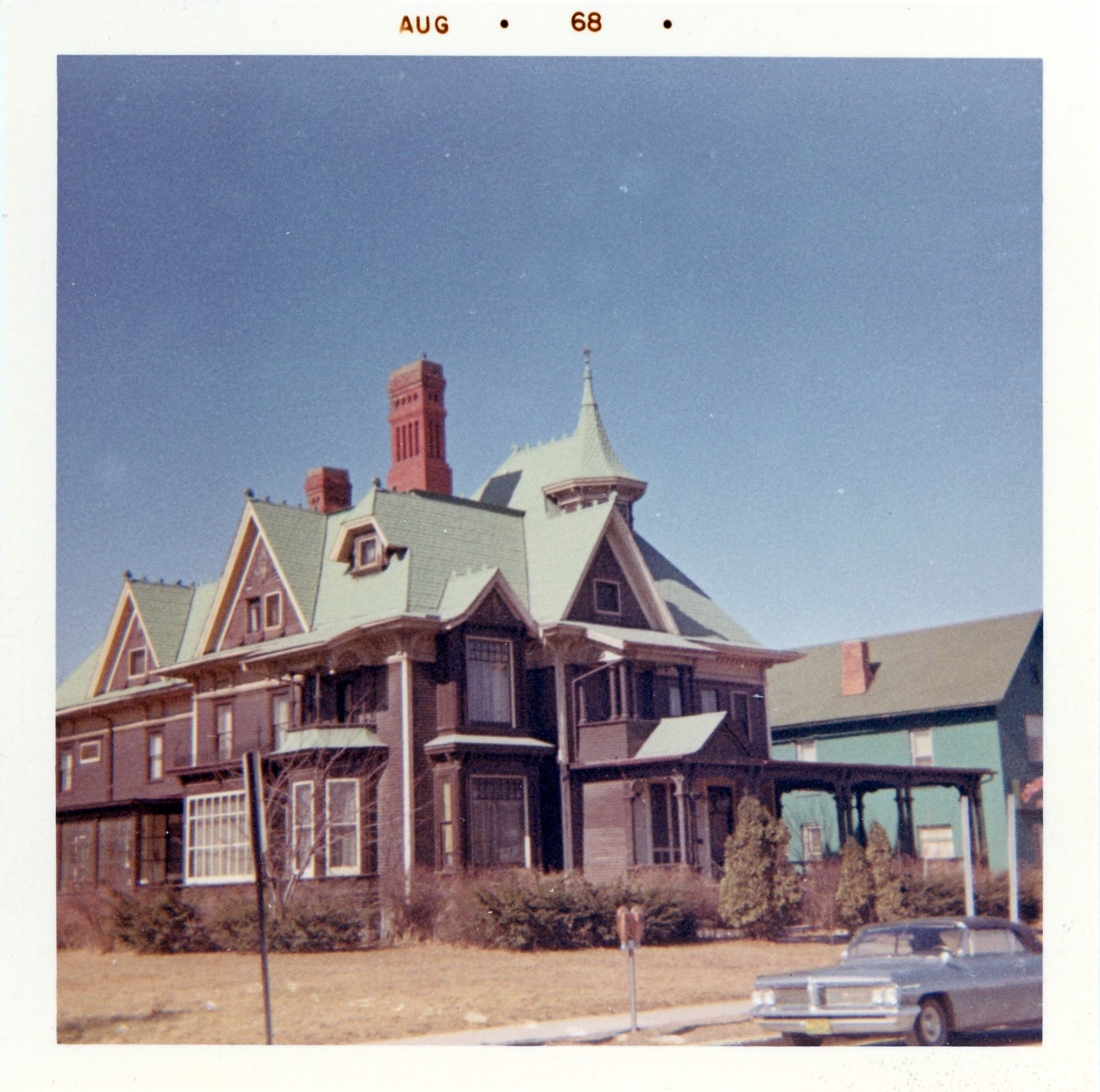A Lansing Treasure Preserved
Philip A. Siebert, the B.F. Davis Mansion, and a Water Pitcher
Philip Siebert was a mere 16 years old when the iconic O.M. Barnes Castle was demolished, and just 25 when the R.E. Olds Mansion was lost. He documented both as one of Lansing’s foremost architectural historians of the twentieth century. His photographs of the Barnes Castle remain as some of best views of the home taken in its final hour, before the wrecking ball hit in 1957. The images were used in the publication: Barnes’ Castle, 1877-1957: Lansing, Michigan, Victorian Paradigm by James E. Billings, Margaret O'Rourke and Thomas Rasmusson (1983).
The historic B.F. Davis mansion was another of Phil’s interests. It was one of a number of large residences belonging to Lansing’s elite that once dotted South Washington Avenue. The Davis home stood at 528 South Washington Avenue, near the northwest corner of South Washington Avenue and Hillsdale Street.
Benjamin Franklin Davis (1844-1934) was an industrialist, bank president, and son of Lansing pioneers. He built the home in 1889, with original plans prepared by Lansing architect Darius B. Moon. Though Moon’s plans were not wholly adhered to in its construction, and a 1909 renovation further altered some of its appearance. The home was filled with art collected and done by Mrs. Davis.
Once called the “white castle” for its exterior color, its design made it an architecturally important home, built in a Victorian “Carpenter Gothic” style, with a Chinese pagoda on the roof, among other noted features.
Davis founded the Lansing Wheelbarrow Company in 1881, later known as the Lansing Company, and was one of the organizers of the City National Bank in 1885. B.F. married Eva Sparrow, a sister of Edward W. Sparrow, in 1875, and the couple had two daughters, Bessie and Edith Eve. He was widowed in 1890, after which he married Sarah Day, daughter of Fiske Day.
The Davis Mansion remained in the family through its final days. B.F. and Eva’s daughter Edith Eve Davis (1880-1967) lived in the home until shortly before her death. Phil Siebert became acquainted with Mrs. Davis and documented the home, including taking the series of photographs featured below in 1968.
He photographed the home’s exterior and interior and was ultimately a caretaker of Davis family mementoes, including photos and artifacts.
Among the items Phil retained from the Davis estate was this Victorian silver plate ice water pitcher with porcelain liner, circa 1890, accompanied by a footed base and a pair of silver-plated vases, including one engraved “Eva.” This silver set were likely original to the Davis home.
Phil wrote extensively on local architecture and house history. His 1966 master’s thesis The ‘Bracketed-Tower’ Style of Architecture in Mid-Michigan, discusses various homes in Greater Lansing including the Squire Havens “1861 House” on Capitol Avenue and the aforementioned O.M. Barnes Castle. In his art and architectural research, Phil became an advocate for the Davis house and others in Lansing.
Following Edith Eve Davis’ death in 1967, the family home became threatened by vacancy, neglect, and progress. It was slated for demolition in 1971, but was saved by an influx of donations spurred by a State Journal column by Birt Darling, which allowed the Lansing Historic District Study Committee time to examine the home and its future. Lansing City Council endorsed efforts by the Historical Society of Greater Lansing to preserve the home and allowed the society to sign a lease while those efforts were underway. The work of onetime HSGL president and County Historian Ford Ceasar, among others including Siebert, led the efforts to save the Davis Mansion. A key step in its preservation was the placement of the home on the National Register of Historic Places, which would subsequently lead to funds for its preservation.
In the midst of fundraising, renovations, and the National Register application in March 1972, the Davis mansion burned thereby ending preservation efforts. The fire-destroyed home was ultimately added to the National Register before being demolished in July 1972. Today the site is vacant and is slated for inclusion in a planned music venue, perhaps a fitting future for the site of a home that was filled with art and treasured by those who knew it.
Friend and longtime supporter Philip Siebert passed away in 2022. He left to the HSGL, among various Lansing writings, papers, and photographs, this silver plate water pitcher from the Davis Mansion in memory of Edith Eve Davis. We look forward to placing it on view at the Rogers-Carrier House, one of few surviving Moon-designed homes in Lansing, when it becomes the society home next year.






